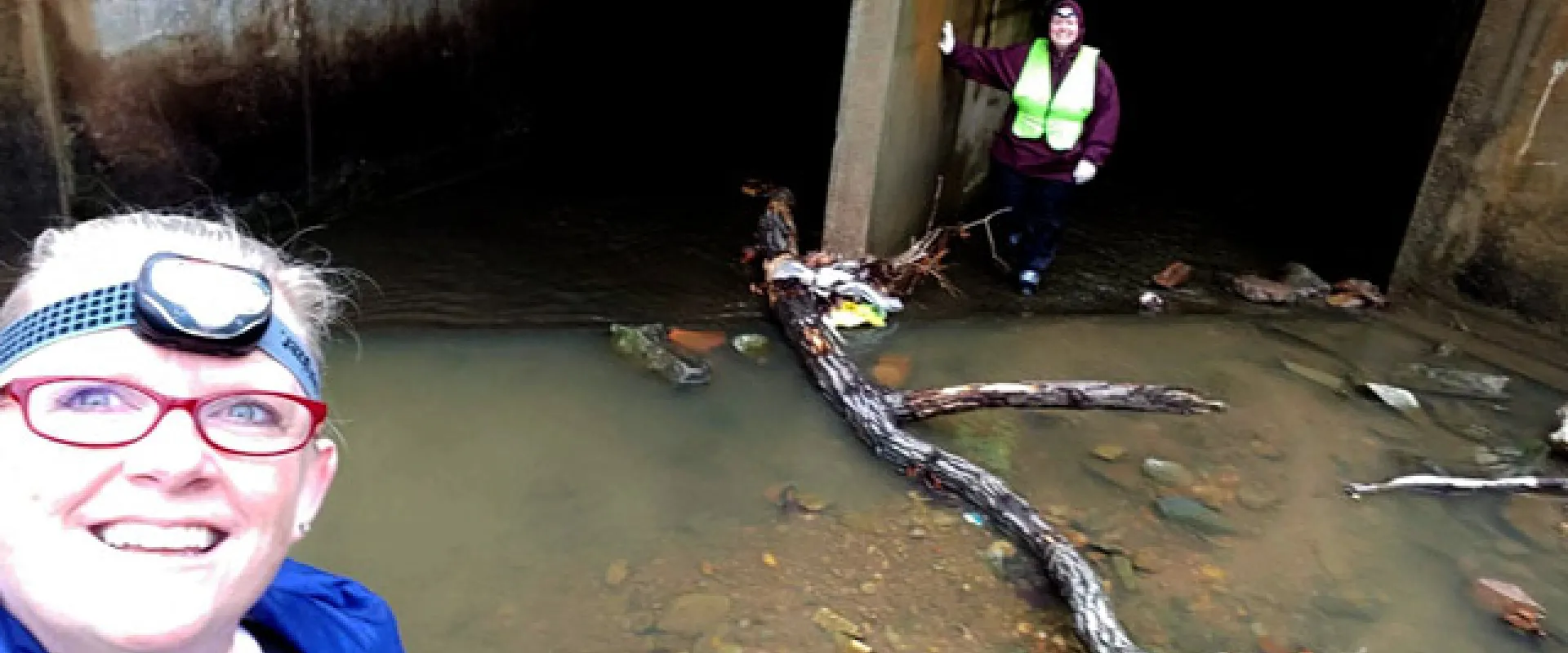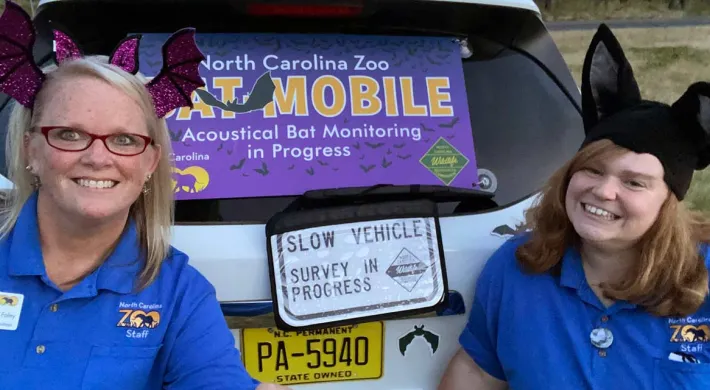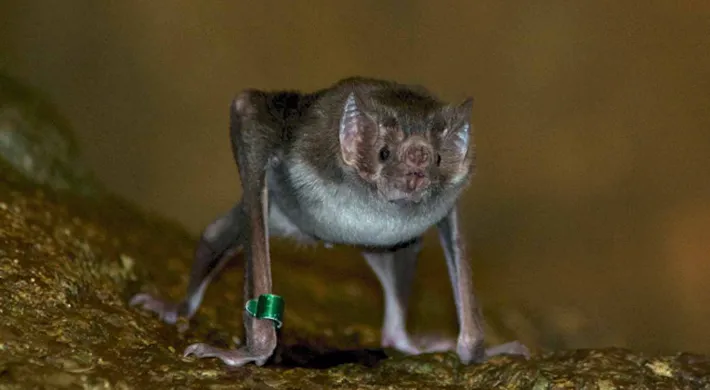Written by Leslie Wilhoit, School Programs Coordinator, North Carolina Zoo
Few things can get me walking under a highway and through a dark culvert, or tunnel, in February. And one of these things is to help bats. My colleague Wendy and I were tasked with going to as many culverts in Randolph County that we could fit in one day in hopes of finding where bats are living during their hibernation and test if any have white-nose syndrome.
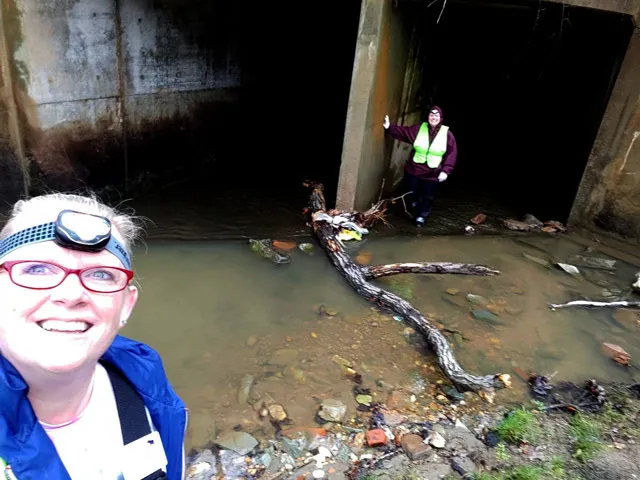
Wendy and I at a culvert
United States Geological Survey (USGS) describes white-nose syndrome as a disease caused by the fungus Pseudogymnoascus destructans (Pd). It grows in the cold, dark, and damp places where bats hibernate. The fungus attaches to the bat while it is least active, causing it to burn more fat than usual and damage its wings and skin. There is no cure, but scientists from all over the world are working together to study the disease, how it spreads and infects bats, and what we can do to manage it. Since the winter of 2006-2007, millions of North American bats have died from white-nose syndrome, and it has been confirmed in 33 states and several Canadian provinces.
So, there I was, sometimes knee-deep in freezing water with a headlamp and clipboard in tow. Though I wanted desperately to see a bat, we didn’t find any that day. It’s common to think of zero bat sightings as a wasted day but in science, even finding nothing can be incredibly valuable. In this case, ‘nothing’ meant the possibility to check fewer culverts from year to year, narrowing down where these elusive animals like to hibernate and understanding where the management of spread is most needed.
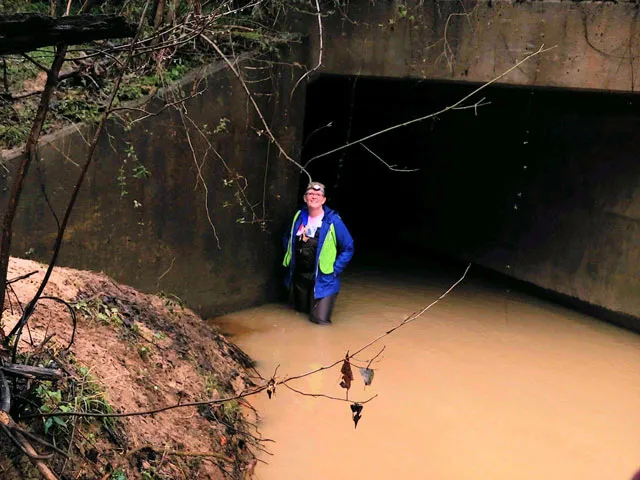
Wendy near a dangerous culvert with high, muddy water
Because scientists are not entirely sure how Pd spreads, I had to thoroughly sanitize myself after every culvert visit and wear the proper PPE (personal protection equipment) during the surveys. I wore surgical gloves, waders, rain boots, and a raincoat with the hood up to cover my hair. I just imagined what people seeing me climb down the hills on the side of the highway or into a culvert with no context clues were thinking. I am sure there were plenty of thoroughly confused drivers passing me. If we were to have found a bat, our task was to swab their nose while making sure not to wake them. The swab would be sent to the N.C. Wildlife Resource Commission for further analysis and research between them and other bat conservation partners.
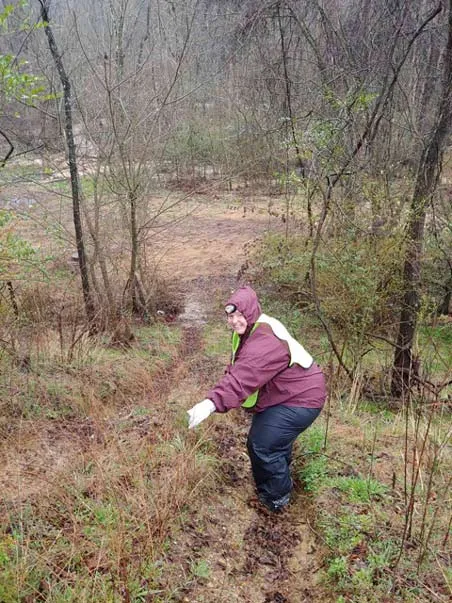
Sliding down in the mud to the culvert
But it looks like we are still searching for now.
